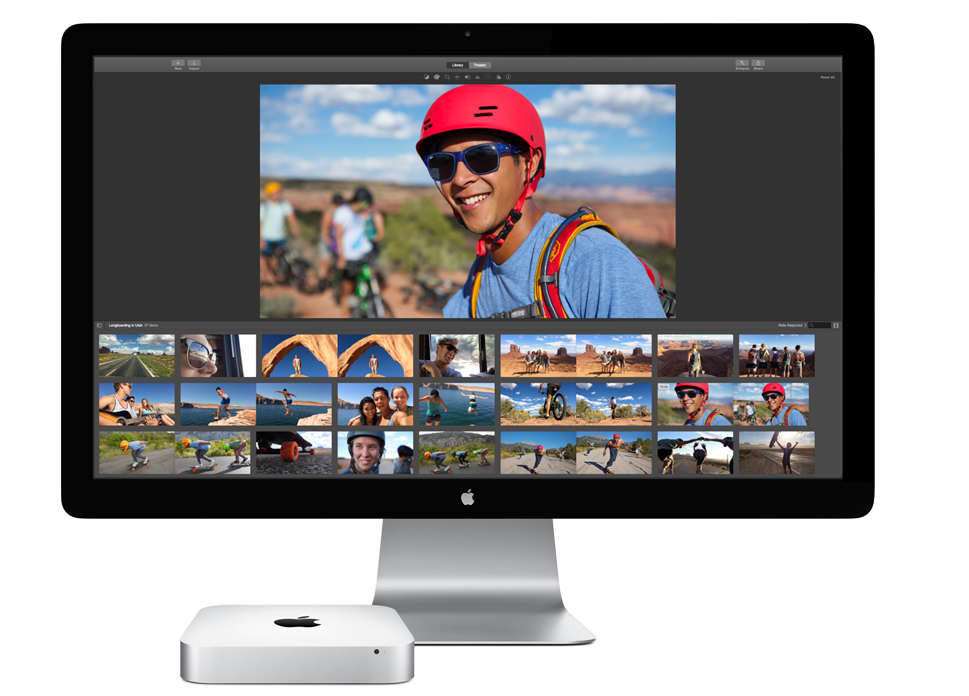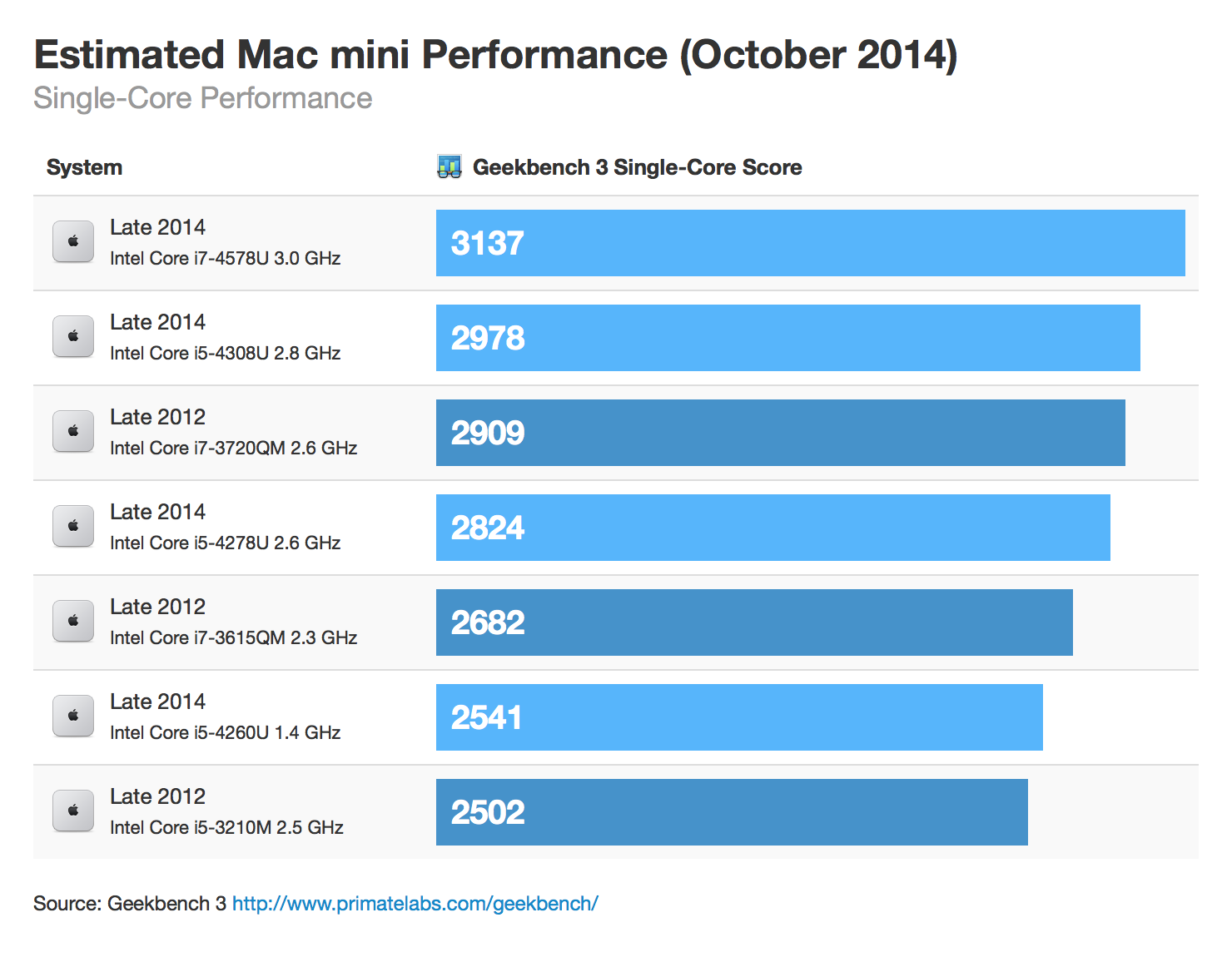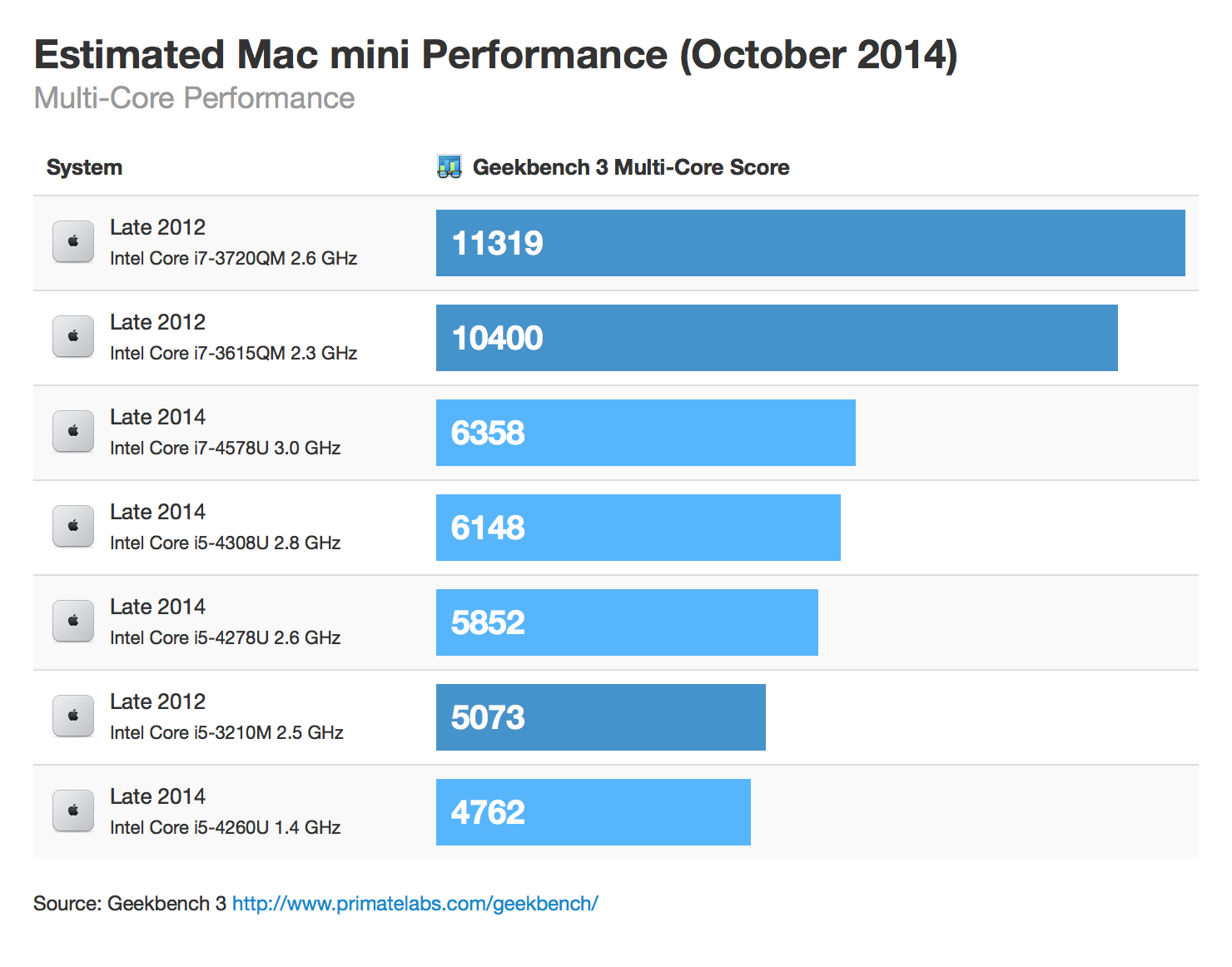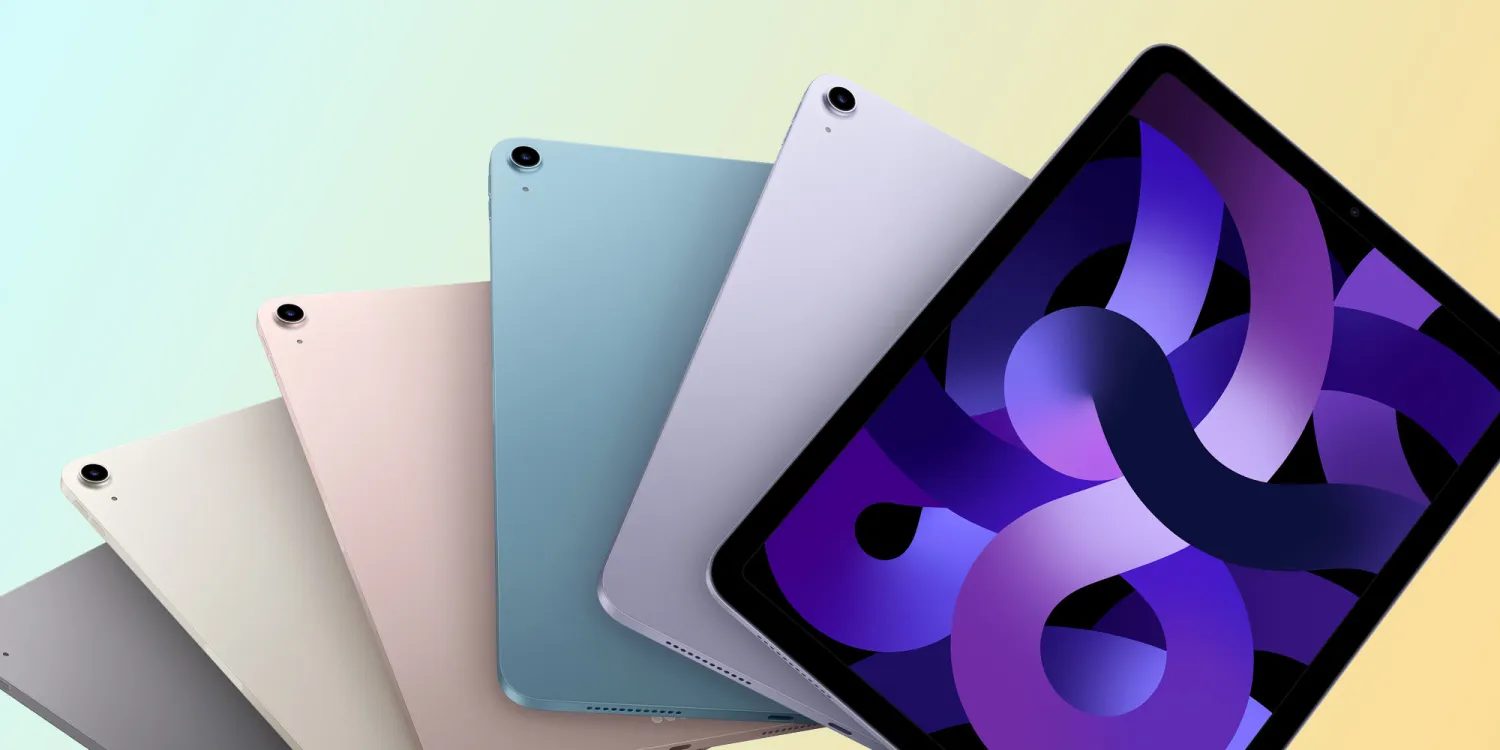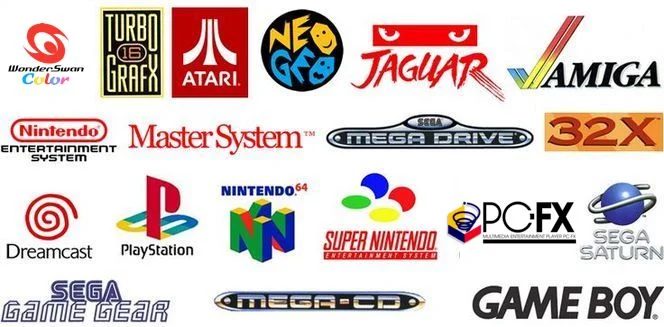
Primate Labs: Estimating Performance of Apple’s New 2014 Mac Mini
After going more than two years without an update, Apple finally updated its Mac mini lineup with Intel’s Haswell processors, 802.11ac Wi-Fi, and PCIe-based flash storage options.
The folks over at Primate Labs, known mostly for their cross-platform benchmarking tool called Geekbench, have decided to estimate the performance on the 2014 Mac mini and see how it compares to the previous generation. The Geekbench Browser does not currently contain any results for the new Mac mini, so the following results are estimates based on other systems that use the same Intel processor.
The first test conducted was single-core performance on the new Mac mini. The estimates were then compared to actual Geekbench results of Apple’s late 2012 Mac minis. Here is a chart that illustrates the first set of results:
Overall, the single-core performance in the “late 2014” models of the Mac mini have increased between 2% and 8% when compared to the “late 2012” models. The slight performance improvement was expected when making the jump from Ivy Bridge to Haswell.
The second test which was conducted was multi-core performance on the new Mac minis. The results, which are shown in the chart below, may be different from what you expected.
As you can see, the multi-core performance has dropped significantly in the new 2014 models. Comparing the same two levels of processors we see anywhere from a 7% to an 80% drop in performance when compared to the “late 2012” models.
“So why did Apple switch to dual-core processors in the “Late 2014” lineup? The only technical reason I can think of is that the Haswell dual-core processors use one socket (that is, the physical interface between the processor and the logic board) while the Haswell quad-core processors use different sockets.”
The only way Apple would have been able to fix this problem and accommodate both dual-core and quad-core Haswell processors would have been to design two different logic boards.
Alternatively, the company could have chosen quad-core processors for the whole lineup, however, they would have not been able to reduce the price point to $499(USD) / $549(CAD). The average user will not notice any performance decreases when performing everyday tasks, however, if you are a photographer, video editor, or looking to run a server on your Mac mini you may be better off trying to find a “late 2012” quad-core model of the Mac mini.
